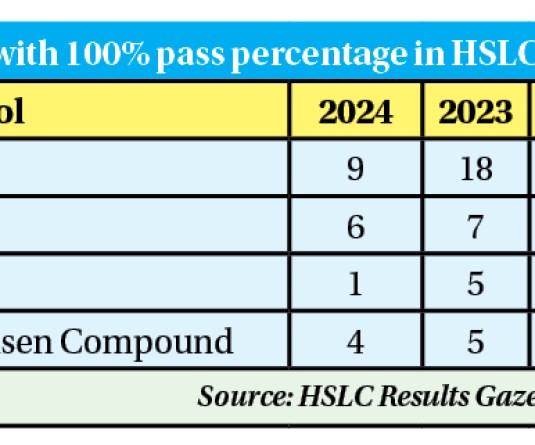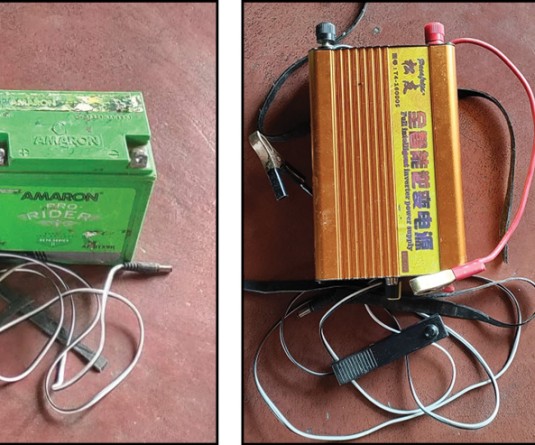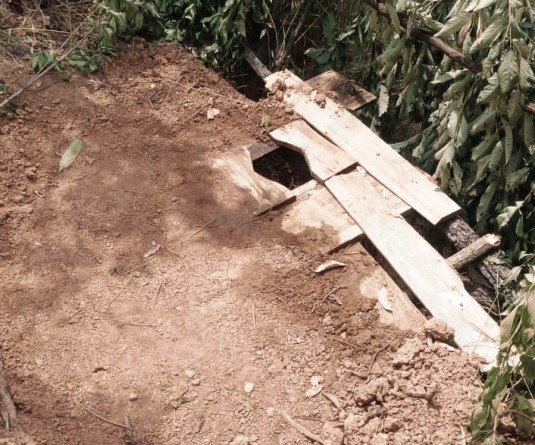
• Increase in institutional deliveries in Nagaland
• C-section deliveries at private health units almost double that at govt health units
Moa Jamir
Dimapur | April 23
In Nagaland, Caesarean Section (C-Section) child deliveries have rapidly increased over the past decades. In 1999-2000, institutional child deliveries through C-Section stood at an almost negligible 1.2%. It gradually increased to 2% in 2005-06. A decade later, according to the latest National Family Health Survey 2015-16 (NFHS- IV), C-section in Nagaland was being conducted at the rate of 5.8% of overall institutional deliveries—a percentile increased of 190%.
This increase has largely been contributed by deliveries at private healthcare units. 31.4% of the deliveries here were through C-section in 2015-16, as per the NFHS-IV report.
According to World Health Organisation (WHO), the international healthcare community considers the ‘ideal rate’ for C-Section to be between 10-15%.
When medically necessary, C-Section can effectively prevent maternal and newborn mortality but when the rate goes above 10%, there is no evidence that mortality rates improve, highlighted a WHO Statement.
More institutional births
Comparing the available data on C-Section deliveries in Nagaland, the rise can be attributed to increased institutional deliveries.
For instance, NFHS –IV data on ‘Delivery Care (for births in the 5 years before the survey)’ indicate the increase in institutional deliveries (including public and private) in Nagaland State from 11.6% in 2005-06 (NFHS III) to 32.8% in 2015-16 (NFHS IV).
During the same period, C-Section deliveries similarly increased from 2.0% in 2005-06 to 5.8% in 2015-16. While the number is negligible in absolute terms, the percentile increase of around 190% needs holistic policy orientation.
More than WHO recommended C-sections
C-Section births at private health units, as per the NFHS-III and NFHS-IV, have risen from 18.5% to 31.4% of the total deliveries here surpassing the WHO’s recommended level by a great extent—a nearly 70% decadal rise.
Meanwhile, C-Section births at public health units depicted a decline from 15.8% in 2005-06 to 13.5% in 2015-16—a nearly 15% fall, and well under the WHO threshold.
In other words, private hospitals perform more than twice the number of C-Section deliveries as compared to government hospitals.
Observing the trend, a Gynecologist at the Dimapur District Hospital had told The Morung Express in 2015 that he has been “encouraging colleagues to minimise the number of such deliveries as far as possible and to operate only when medically required.”
The Gynecologist attributed the rising Caesarean deliveries to last minute patients (un-booked cases) with complications after they were mismanaged at home as a main reason behind the rise in the C-section deliveries at the district hospital.
A previous report in The Morung Express revealed how, as per NFHS-IV (2015-16), Infant Mortality Rate in Nagaland State stood at 29% with only 2.4% of mothers receiving full institutional antenatal care.
Preference & other reasons
According to the WHO, some of the most omnipresent reasons behind this rise are also the fear of pain during birth including the pain of uterine contractions; the convenience to schedule the birth when it is most suitable for families or health care professionals; or because it is perceived as being less traumatic for the baby. Medical conditions before pregnancy such as obesity, diabetes, blood pressure, and heart related problems are also attributed to reasons for opting for the knife.
A consultant in a private Nursing Home in the last Morung story on C-Section attributed the rise to “advancement of medical technology and the resulting term called ‘caesarean on demand’ for patients who don’t want pain during birth.”
She also noted that parents opting for small families often prefer C-section delivery, adding that 50% of the pregnant patients in her nursing home demand it.
However, allegations are often leveled against private clinics and practitioners that they suggest C-Section deliveries as they allegedly earn more money while spending less time on patients.
The overall picture
Caesarean deliveries in institutional births in India have witnessed a rising trend from 7.1% in 1999-2000 to 8.5% in 2005-06, and to 17.2% in 2015-16. Here too, more C-sections were conducted at private health units than at government ones as per the NFHS.
While WHO recommends the ‘ideal rate’ for C-Sections to be between 10% and 15%, it also cautioned that C-Sections could cause significant complications, disability or death, particularly in settings which lack the facilities to conduct safe surgeries or treat potential complications.
“Due to their increased cost, high rates of unnecessary caesarean sections can pull resources away from other services in overloaded and weak health systems,” it stated, advising usage only when “medically justified.”
According to a Times of India report, the alarming rise in C-Section surgeries in India, mainly in private hospitals, generated an online petition in February 2017 seeking government intervention to bring in accountability and transparency in institutional deliveries.
Consequently, the Union’s Women and Child Development Minister Maneka Gandhi wrote to Health Minister suggesting to make it mandatory for hospitals to publicly display the number of C-Section surgeries and normal deliveries carried out.
Similar measures could be adopted in Nagaland.





